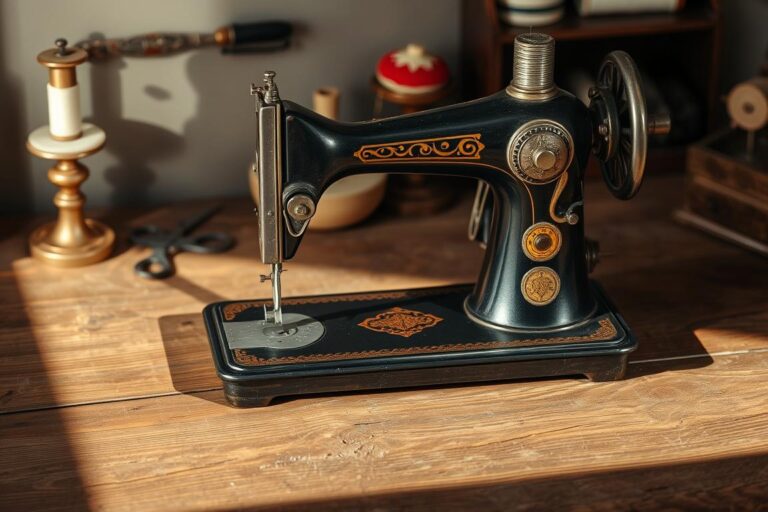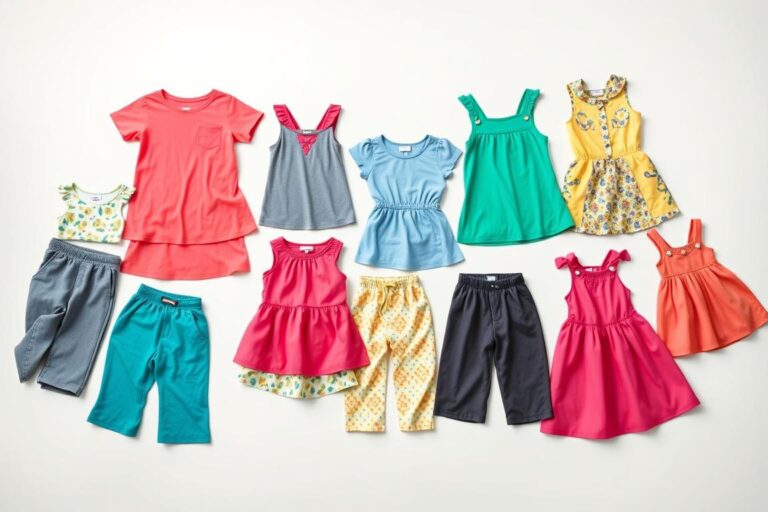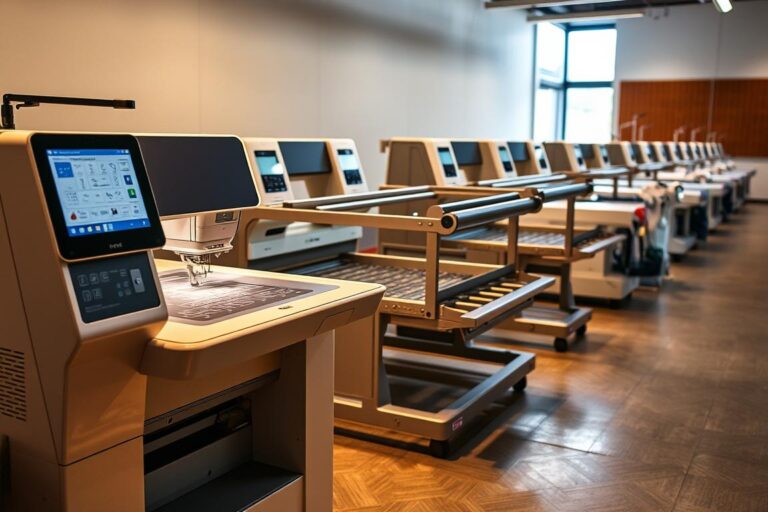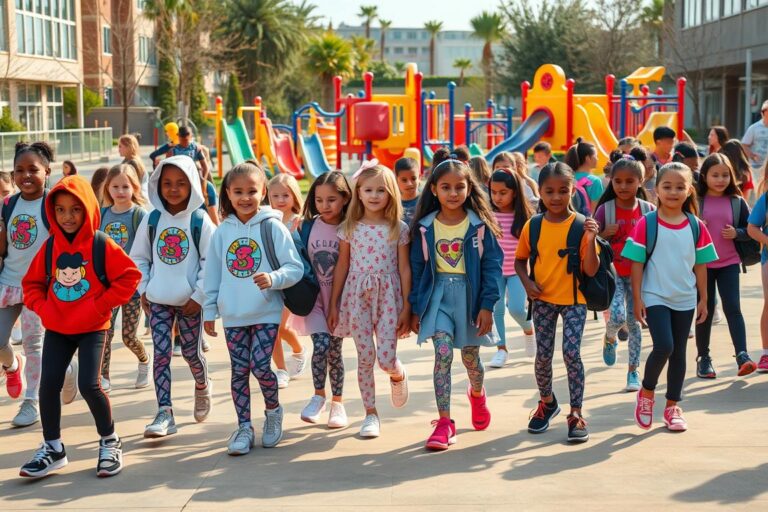Discover 2025 Sewing Tech Trends: What’s Hot in the Global Market
Have you ever wondered how the fashion industry keeps up with the fast-paced demands of today’s world? Imagine a digital tapestry, weaving together threads of innovation and creativity to redefine how we create and consume fashion.
The market is evolving rapidly, with the fashion sector projected to reach $3.3 trillion by 2030. Gone are the days of traditional methods—today’s world craves speed, precision, and personalization. From AI-driven designs to voice-controlled tools, the trends shaping this industry are nothing short of transformative.
2025 Sewing Tech Trends: Let’s explore how these innovations empower your creative journey. Whether you’re adjusting patterns via smartphone or embracing sustainable alternatives, the possibilities are endless. Ready to dive into the future of sewing? Let’s get started!
Introduction to 2024 Sewing Tech Trends
From factories to closets, technology is driving a new era of fashion. The post-pandemic world saw our closets adapt to Zoom calls, while factories embraced digital technologies to meet consumer demand. This shift has reshaped the entire supply chain, making it faster and more efficient than ever before.
Take PLMBR’s cloud software, for example. It has reduced tech pack creation time by 70%, streamlining the production process. McKinsey predicts that generative AI could unlock $275 billion in profits for the fashion industry by 2028. This is a game-changer compared to traditional design cycles, which often took 3-8 months. AI now accelerates these processes, giving designers more time to innovate.
Sustainability is also at the forefront. Renewcell’s Circulose® fabric, made from recycled textiles, is a prime example. It’s not just about materials—tech is making fashion smarter. Imagine yoga pants that correct your poses! Nadi X is leading the way with wearable tech that enhances your workout.
Yet, challenges remain. Fashion Revolution’s Transparency Index reveals that 28% of brands still score between 0-10%. This highlights the need for greater accountability in the industry. As creators, we’re not just stitching fabric—we’re weaving the future. Together, we can embrace these innovations to build a more sustainable and efficient fashion world.
Artificial Intelligence in Sewing and Fashion
Imagine a world where your sewing machine learns from your patterns. Artificial intelligence is revolutionizing the way we design, produce, and even wear clothing. From reducing waste to improving precision, AI is making processes faster and more efficient than ever before.
Take Juki’s Intelligent Sewing System, for example. It cuts thread waste by 33%, saving both materials and costs. Brother’s Vision Sewing takes precision to the next level, ensuring every stitch is perfect. These innovations are transforming supply chains, making them smarter and more sustainable.
AI isn’t just for big brands. Small businesses are also benefiting from intelligent forecasting tools. These systems analyze data to predict trends, helping boutique makers compete in a crowded market. It’s like having a crystal ball for your creative projects!
- Neural networks are weaving their way into fabric production.
- AI-driven tools reduce errors and improve collaboration.
- Small brands gain a competitive edge with big data insights.
As we embrace these advancements, we’re not just sewing—we’re building a smarter, more sustainable future. Let’s stitch together innovation and creativity to shape the world of fashion!
Innovative and Sustainable Fabrics
What if your old clothes could transform into something entirely new? The fashion industry is embracing recycling like never before. H&M’s Looop machine is a game-changer—it disassembles old sweaters into new yarn in just five hours. This innovation reduces waste and gives garments a second life.
Resortecs is another pioneer, using dissolvable threads that speed up garment recycling by six times. Imagine your jeans being reborn as handbags or jackets. This technology is revolutionizing the supply chain, making it faster and more eco-friendly.
Renewcell’s closed-loop process is equally impressive. Their Circulose® fabric turns recycled textiles into high-quality materials. It’s a perfect example of how innovation meets sustainability. Brands and consumers alike are embracing these solutions to reduce their environmental footprint.
Secondhand fashion is also booming. Depop, a popular resale platform, has seen 300% growth in recent years. This shows the power of reusing and repurposing clothing. Could your scraps become tomorrow’s couture? The possibilities are endless when creativity meets sustainability.
Together, we can build a fashion world that’s not only stylish but also kind to the planet. Let’s embrace these innovations and make every stitch count!
The Internet of Things (IoT) in Sewing Technology
Picture this: your sewing machine sending you a text to fix an issue—welcome to the future of crafting! The Internet of Things (IoT) is transforming how we approach production, making it smarter and more efficient. With devices connected and communicating, the possibilities are endless.
Take Brother’s S-7300A machines, for example. These allow remote adjustments via Android tablets, giving you control from anywhere. Duerkopp Adler’s Qondac system is another game-changer, reducing machine downtime by 44%. These solutions are redefining the way factories operate.
IoT isn’t just for large-scale operations. A small Detroit manufacturer boosted output by 28% after adopting IoT-enabled systems. This shows how accessible and impactful these technologies can be for businesses of all sizes.
However, with great power comes great responsibility. Cybersecurity is crucial to protect your patterns and data from digital threats. As we embrace IoT, it’s essential to safeguard our creative work.
- Your sewing machine texts IT support? That’s Industry 4.0 in action!
- IoT-enabled factories outperform traditional setups in efficiency and precision.
- Real-world success stories, like the Detroit manufacturer, prove IoT’s potential.
- Always prioritize cybersecurity to keep your innovations safe.
By integrating IoT into our creative processes, we’re not just sewing—we’re building a smarter, more connected future. Let’s embrace these advancements and stitch together innovation and efficiency!
Rapid Data Analysis for Quick Adaptation
What if your factory could adapt to trends in real-time? In today’s fast-paced world, staying ahead means leveraging data to make smarter decisions. From reducing approval times to optimizing fabric layouts, technology is transforming the way we approach manufacturing.
Take PLMBR’s cloud system, for example. It slashes sample approval time from 14 days to just 2. This isn’t just a time-saver—it’s a game-changer for operations. Faster approvals mean quicker turnarounds, helping brands meet consumer demands with ease.
EFI Optitex’s 3D rendering is another breakthrough. It cuts physical prototypes by 80%, saving both time and costs. Imagine designing a garment in minutes instead of weeks. These solutions are reshaping the industry, making it more efficient and sustainable.
AI-driven cutting machines are also revolutionizing fabric layouts. They optimize every inch of material, reducing waste and boosting productivity. Taylor Stitch’s pre-order model takes this a step further, eliminating 73% of overstock. It’s a win-win for brands and the planet.
“When Beyoncé’s concert look trends at 9PM, your factory adapts by 9:01.”
Ready to see how much you can save? Use our interactive tool to calculate your fabric savings. It’s time to embrace these innovations and build a smarter, more efficient future. Together, we can make every stitch count!
Mobile Commerce and the Future of Fashion Retail
Imagine stepping into a virtual mall from the comfort of your couch. Mobile commerce is reshaping how we shop, blending technology with creativity to create unforgettable experiences. Gucci’s AR sneaker try-ons, for example, have boosted conversions by 34.6%, proving that innovation drives customer engagement.
Obsess’s 360° virtual malls are another game-changer. These immersive spaces increase session time by 8 minutes, making shopping feel like an adventure. Your living room becomes a runway—no airline tickets needed! This seamless integration of tech and fashion is transforming the retail landscape.
Tools like Virtusize are also reducing returns by simplifying sizing. Snap a pic of your favorite jeans, and the app ensures your new pair fits perfectly. Etsy sellers are taking it a step further, using Clo3D for custom avatar fittings. It’s like having a personal tailor in your pocket!
Soon, you’ll test sewing patterns on your digital twin. This blend of designs and tech is not just convenient—it’s revolutionary. Together, we’re building a future where creativity and innovation meet at your fingertips. Ready to explore what’s next? Let’s dive in!
Augmented Reality (AR) and Virtual Reality (VR) in Fashion
Step into a world where your designs transcend physical boundaries. Augmented Reality (AR) and Virtual Reality (VR) are reshaping the fashion landscape, blending creativity with cutting-edge technology. From digital-only collections to virtual try-ons, these innovations are redefining how we interact with style.
Take DressX, for example. Their digital-only collections have sold over 10,000 NFT garments, proving that the market for virtual fashion is booming. Meta’s avatar store projections suggest a $5 billion digital fashion market by 2025. This isn’t just a trend—it’s a revolution.
Imagine your embroidery adorning a million digital influencers overnight. Pioneers like The Fabricant are leading the charge, selling virtual dresses for $9,500. These creations exist solely in the digital realm, offering a sustainable alternative to traditional fashion. It’s zero-waste couture for virtual worlds!
Here’s how you can join the movement:
- Mint your sewing patterns as blockchain-protected assets, ensuring your designs are secure and unique.
- Experiment with AR tools to visualize your creations in real-time, making adjustments before stitching a single thread.
- Collaborate with digital platforms to showcase your work to a global audience.
As brands and consumers embrace these innovations, the possibilities are endless. Together, we’re building a future where creativity knows no bounds. Let’s stitch together the physical and digital worlds to shape the next wave of fashion trends!
Automation and the New Workforce in Sewing
The future of crafting is here, blending tradition with cutting-edge technology. Automation is transforming the workforce, creating exciting opportunities for creators of all levels. From 3D pattern engineers to IoT maintenance techs, the roles in this new era are as innovative as the processes they support.
FIT’s new “Sewing Informatics” degree is a prime example of this shift. It combines data science with needlework, preparing students for hybrid tech-textile roles. According to a WFX survey, 68% of factories now seek these skills, proving that the industry is evolving rapidly.
Here’s how you can future-proof your skills:
- Explore free Coursera courses on CNC machine operation to stay ahead of the curve.
- Consider roles like 3D pattern engineers, which are among the top-paying positions in the field.
- Embrace IoT maintenance tech roles, where your expertise meets smart machines.
Take inspiration from a former seamstress who became a robotics trainer at 55. Her journey shows that it’s never too late to adapt and thrive in this new landscape. With the right solutions, you can turn your passion into a cutting-edge career.
Together, we’re building a future where creativity and technology go hand in hand. Let’s embrace these advancements and craft a brighter tomorrow!
Transparency and Traceability in the Fashion Supply Chain
Ever thought about the journey your clothes take before reaching your closet? Transparency in the fashion supply chain is no longer optional—it’s a demand from consumers who want to know the story behind their garments. From factory conditions to fair wages, every thread matters.
The Fair Wear Foundation is leading the charge with factory cameras that have reduced violations by 62%. This innovative approach ensures accountability and improves working conditions. It’s a win-win for both workers and brands committed to ethical production.
Orange Fiber’s blockchain system is another game-changer. It provides real-time proof of living wages, giving consumers confidence in their purchases. This technology is transforming how we view transparency, making it easier to support brands that align with our values.
- Your sewing machine could soon rate its own working conditions, ensuring ethical practices at every step.
- Use tools like Good On You to audit supply chains and make informed choices.
- An LA brand is using AI to match clients with ethical factories, setting a new standard for the industry.
As consumers, we have the power to drive change. By demanding transparency in every thread we buy, we can create a fashion world that’s fair, ethical, and sustainable. Let’s make every stitch count!
Conclusion
The world of crafting is evolving faster than ever. From 3D-printed silks to self-heating hems, the future of fashion is here. These trends are reshaping the market, offering endless possibilities for creators like you.
You hold the needle—stitch these innovations into your work. Start small by experimenting with an AI pattern generator. Not every gadget deserves your thread budget, so choose wisely. Focus on tools that truly enhance your craft.
Imagine a future where your sewing circle is holographic, sustainable, and wildly creative. Together, we’re building a world where every stitch tells a story. Let’s embrace these advancements and craft a brighter tomorrow!








